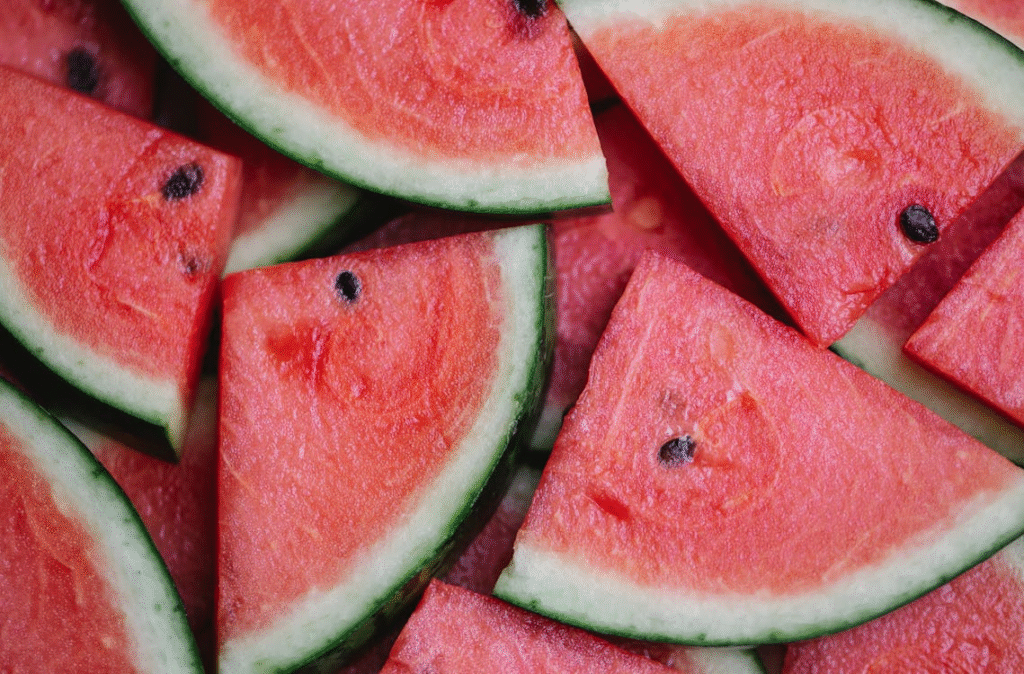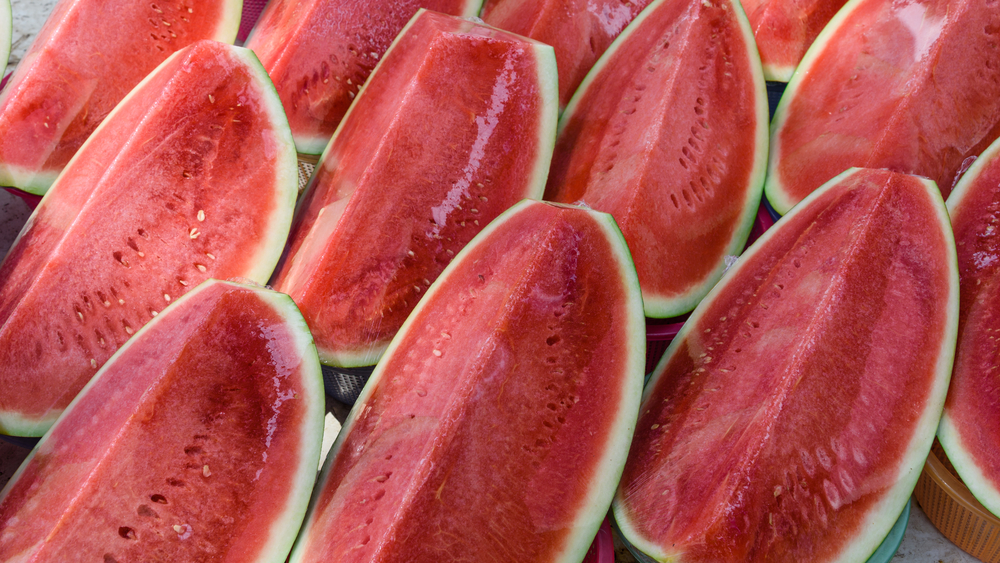Watermelon season brings out everyone’s inner produce expert. Supermarkets pile them high, and farmers’ markets offer them fresh off the vine. But finding the perfect one? That is the tricky part. People try tapping them, sniffing them, even shaking them, but all that effort often ends in disappointment. According to experienced farmers, there is really only one way to tell when a watermelon is ripe, and it is much simpler than you think.
Forget the Thump Test
You have probably seen shoppers thumping watermelons like they are tuning a drum. The theory goes that a ripe watermelon makes a hollow sound, while unripe or overripe ones sound dull. But this method is unreliable. Sound can vary based on the watermelon’s variety, shape, and how it was grown. Two melons of the same ripeness can sound completely different. This makes the thump test more of a guessing game than a science.
The True Indicator Lies Beneath
Farmers agree that the only truly dependable way to tell if a watermelon is ripe is to look at the field spot. This is the pale patch on the underside of the melon where it sat on the ground. When a watermelon is fully ripe, this spot changes color. A white or green field spot means the melon was picked too early. A creamy yellow or even golden spot signals the fruit had time to ripen naturally in the sun. This is the clearest visual sign that the inside will be juicy, sweet, and ready to eat.
What the Field Spot Really Tells You
The field spot develops over time as the watermelon grows in one position. The more days it rests on the ground, the more sunlight the rest of the melon receives. As it ripens, sugars develop and the rind toughens. The yellow color on the bottom is a signal that ripening is complete. It also means the melon is not getting any more nutrients from the vine. Pick it after this point and it will be at peak flavor. Wait longer and it may begin to lose water and texture.
Color and Texture of the Rind

Once you identify a good field spot, take a look at the overall rind color. Ripe watermelons usually have a dark green skin with dull, matte stripes. If the rind still looks shiny or very bright, it may not be ready. The texture also changes slightly as the fruit matures. A ripe melon will have a tough, firm outer shell that does not give under pressure. If the skin feels too soft or has spongy spots, it may be past its prime.
Check the Shape and Weight
Watermelons should have a consistent, symmetrical shape. Irregular bulges or dents could mean the fruit developed unevenly. This might affect the taste and water content inside. A properly grown watermelon will feel heavy for its size. That weight means it is full of water and sugar. When picked at the right time, it will deliver maximum refreshment and sweetness.
Ignore the Stem Myths
Some people believe you can tell if a watermelon is ripe by checking the condition of the stem. While a dried or brown stem can indicate the melon was mature when picked, it is not always reliable. Many watermelons are clipped clean during harvest. Without the stem attached, you cannot make this assessment at all. Even if the stem is still there, it might have dried out after being picked, not before. That is why farmers rely on the field spot instead.
Stripe Patterns Do Not Matter
There is a lot of misinformation online about stripe width and color. Some say darker stripes mean sweeter fruit, or that narrow bands indicate a specific sugar content. These theories do not hold up across different watermelon varieties. Watermelon skin patterns vary widely based on genetics, weather, and irrigation. You are better off ignoring the stripes and focusing on more concrete clues like the field spot and overall weight.
Why Timing at Harvest Matters
Watermelons stop ripening the moment they are picked. Unlike peaches or bananas, they do not get sweeter on your kitchen counter. That is why picking at the right time is crucial. If the farmer harvested the melon too early, it will never reach its full flavor. That makes the field spot not just a signal of ripeness, but also a reflection of the grower’s timing. A bright yellow spot is the best proof that the watermelon had a proper life on the vine.
Store-Bought vs. Field-Fresh

When buying from a supermarket, your options are limited to what has already been picked and shipped. These melons may have been harvested early to survive transportation. Look for those with a strong field spot and a matte finish to improve your odds. If you are shopping at a farmers’ market or farm stand, you are more likely to find melons picked at their peak. Farmers often rely on visual signs, especially the field spot, when choosing what to bring to sell.
Avoid Melons with Soft Spots
Soft areas on a watermelon are a red flag. They usually mean the inside is overripe or rotting. Press gently on different parts of the melon. It should be consistently firm all over. A ripe watermelon will have a strong shell that feels solid. If you notice even one spongy spot, it is better to pick another one.
What About Sugar Spots?
Sugar spots are dark, rough patches that appear on the skin of some watermelons. Some people believe these spots mean the melon is extra sweet, but that is not always the case. These marks may simply be scars from insects or weather. They do not guarantee ripeness. You are better off relying on the field spot for a more dependable signal.
Don’t Cut Too Soon
Once you get your watermelon home, let it sit at room temperature for a day or two if it came from a cold shelf. This allows the internal sugars to settle and can enhance the taste slightly. But remember, it will not ripen further. Cutting it too soon will just expose a less flavorful interior. Look for all the signs first, especially the field spot, then enjoy it within a few days for best flavor and texture.
Summary: One Simple Rule
If you remember only one thing, it should be this: check the field spot. This one indicator tells you more than any other sign. A bright yellow patch on the underside means your watermelon stayed on the vine long enough to develop full sweetness. Skip the knocking and sniffing and go straight to this proven method. Farmers use it because it works. Once you start checking for it, you will rarely pick a bad melon again.
The Bottom Line
Choosing a ripe watermelon does not require guesswork if you know what to look for. Forget the tapping and theories about stripes. Focus on the field spot and overall feel. It is the method real farmers use, and it is the most accurate way to enjoy this summertime favorite at its best. Next time you shop for one, flip it over and trust what the ground has to say. Your taste buds will thank you.
Read More: How a WWII-Era Gardening Trend Is Helping Families Save on Groceries
Disclaimer: This article was created with AI assistance and edited by a human for accuracy and clarity.

